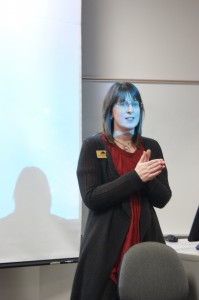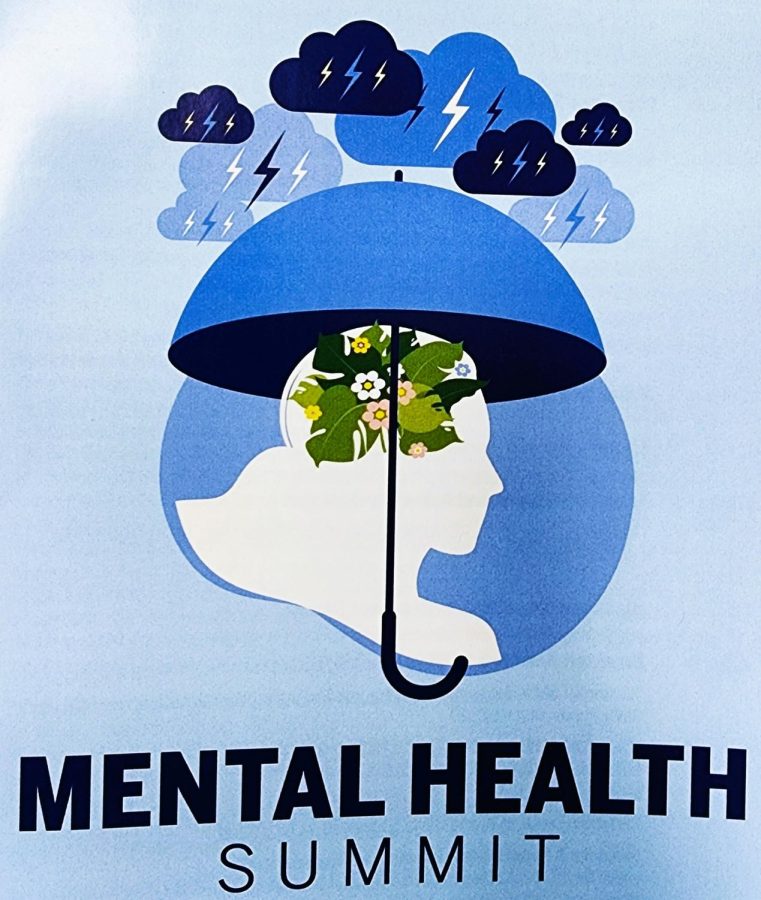Mice puppet workshops for families, art installations at a farmer’s market and interactive DVD’s are all methods the Carnegie Center for Art & History in New Albany uses to make art more accessible to the public.
Art is for everyone, Karen Gillenwater, curator of the Carnegie Center said.
Gillenwater shared her educational and career experiences with students on Feb. 21, in Knobview Hall as the first speaker of the new Curatorial Speaker Series.
A group of fine arts students working toward a concentration in art history organized the speaker series, Hannah Litkenhous, fine arts senior, said.
Carl Roll, fine arts senior, said, the small group of fine arts students call themselves the IUS Art History Club, but the group is not an official campus organization.
“I wanted them to have an opportunity to go out and organize something,” Laurel Fredrickson, assistant professor of fine arts, said. Fredrickson said she suggested inviting speakers to campus, and the students decided to host a curatorial series.
Litkenhous explained that the group decided to host the series to gain insight into career possibilities.

“We really don’t know where we want to go with our degrees yet,” Litkenhous said. “We wanted to find some local curators and find out what their educational experience has been.”
Gillenwater was happy to share her experiences with students, she said. During her presentation, Gillenwater said she has valued the advice of mentors and coworkers with experience in the industry, and she is returning the favor. She wants to help students decide what they want to do after college, she said. Gillenwater encouraged students to discover and pursue their passions.
“Find the one true thing that tugs at your heartstrings and really makes you want to jump in with both feet,” she said.
Gillenwater allowed students to look through her portfolio, a binder packed with pamphlets, brochures and photos of exhibits she had a part in.
She said she keeps boxes of examples from various jobs, internships and projects and she encouraged students to save examples of their own work.
Along with maintaining a portfolio, Gillenwater said internships are an important part of landing a job and settling into a career.
“You have to do a lot of these extra things if you really want to make it,” Gillenwater said.
Gillenwater said throughout college, she continued to keep her career goal in mind.
She focused on taking courses that would make her more marketable and decided to minor in business, partially out of practicality and partially at her parents’ insistence, she said.
Internships were an important part of discovering the direction she wanted her career to take, Gillenwater said. She said sometimes internships can even help students discover what they do not want to do.
“When you figure out what you don’t want to do, that’s just as valuable as figuring out what you want to do,” Gillenwater said.
She said through internships, she learned she enjoys working as part of a team and liked educating the public about art.
Now, working as part of a close-knit team is one of her favorite things about working at the Carnegie Center for Art & History, Gillenwater said.
While art is important, history is also an important aspect of the Carnegie Center, Gillenwater said. She said the center strives to bring art and history together for the community.
“You don’t have to know all about art to walk in the door,” Gillenwater said.
She said throughout her education and career, she learned how the experience of art could change and develop over time. People do not have to like every piece of art, but the more time they spend with a piece of art, the more they can come to appreciate it, Gillenwater said.
Gillenwater said she often suggests that people spend time with pieces they do not immediately like. Gillenwater enjoys seeing people gain new respect and understanding of pieces they initially did not like, she said. She said often once people learn more about the artist or the history behind a piece, they can gain a deeper appreciation for it.
Gillenwater said art is like music or clothing— everyone has his or her own taste.
“You’re going to be drawn to different things,” Gillenwater said.
Gillenwater also enjoys seeing people have meaningful experiences with art, she said. She said she wants art to spark conversations that otherwise people would not hold, and she wants art to cause people to consider things they would not normally consider.
“I really hope that people find pieces they are personally drawn to,” she said.
Fredrickson said she was pleased with the turnout at the first speaker event. She hopes the new speaker series will benefit students interested in art history and curatorial careers, as well as, art students interested in learning how to put their art into galleries, she said.
It is important for members of the community to be part of IU Southeast, and it is important for students to be part of the community, Fredrickson said.
The next presenter in the Curatorial Speaker Series, Joey Yates from the Kentucky Museum of Art and Craft will speak on March 21.
By HANNAH ASH
Staff
hash@ius.edu






